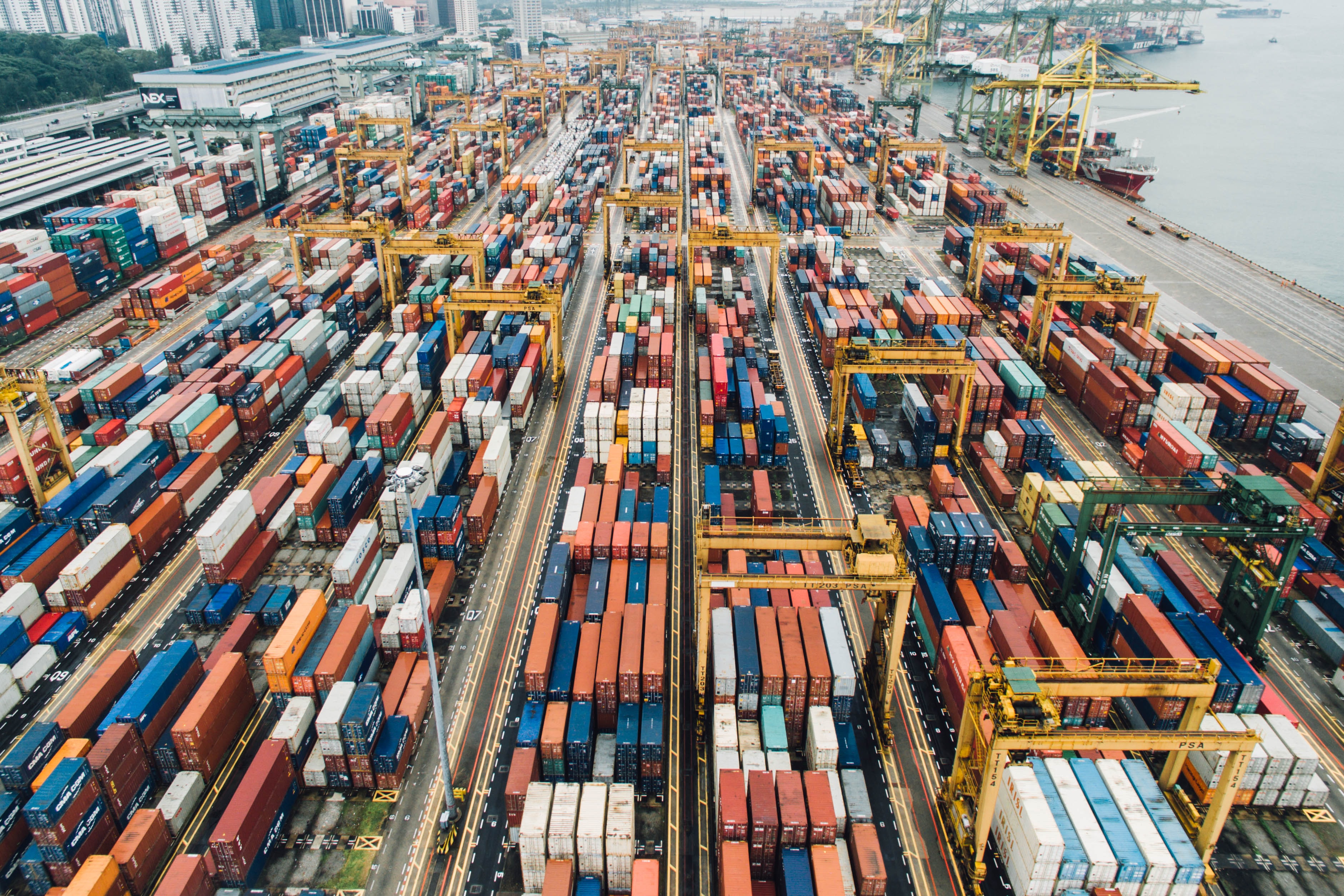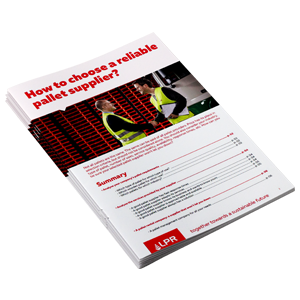Managing and optimising the logistics flows of the supply chain is a constant challenge.
What are the current practices? What are the latest technological innovations? How do you deal with new consumer trends that require ever greater speed and flexibility from the supply chain?
In this article we will attempt to answer any questions you may have about logistics flow management of the supply chain.
Navigation rapide :
1 | What is logistics flow management?
2 | The benefits of logistics flow management for the supply chain
3 | Automation of the supply chain: an innovation for the management of logistics flows
1. What is logistics flow management?
As a starting point, it is necessary to cover the definition of a logistics flow to better understand:
-
the different types of flows that characterise a supply chain.
-
the issues and processes necessary for their control.
A logistics flow refers to a set of successive activities carried out during production.
From creation, production, to distribution, all the movements and actions carried out by a company in its production chain are characterised by flows of different natures.
In most cases there are 3 main types of flows:
-
information flows
-
logistics flows
-
financial flows
1.1. Information flows
Information flows refer to all actions of collection, processing and analysis of data collected by companies.
This data can be of different types:
-
price of competition
-
demographic and financial evolution of the market structure
-
sales history
-
internal and external resources of the company
-
CRM
-
KPI’s
Information flows are closely related to BigData. The data collected is processed, stored and analysed to enable manufacturers to make the most accurate decisions possible for the ongoing management of their supply chain.
These information flows guide the management of physical logistics flows.
1.2. Logistics flows
Logistics flows correspond to:
-
the production of goods (supply, handling, etc.)
-
the transport of goods
-
the storage of goods
The management of these flows should enable a company to produce quality goods at a lower cost, delivered on time to the final recipient.
1.2.1. The different types of logistics flows
There are 2 categories of logistics flows:
a. Internal flows
Internal flows correspond to the operations necessary for the manufacture of finished products. (supply of raw materials, transformation of materials, machining, maintenance of machines, intermediate storage, etc.)
b. External flows
These are divided into two subsets. External flows refer to all movements of goods once the products are finished:
-
Known as supply flows or “upstream” flows
The second subset refers to the transport of goods from the supplier's production warehouse to its customer's warehouse.
-
Known as distribution flows or “downstream” flows
Once the supplier's orders have been sent to the customer, the latter can redistribute the goods to its end customers at different points of sale, warehouses, etc.
1.2.2. Management of physical logistics flows: deployment
Based on the analysis results drawn from their information flows, manufacturers can adopt certain strategies to optimise the production of their supply chain:
-
Just-in-time management
Widely used, the just-in-time management model is based on minimising storage operations in a supply chain.
For example, only ordering raw materials when they are needed in the production process.
-
Synchronous flow management
This flow management model consists of coordinating the arrival of various components at the factory according to their order of use in the production chain.
Synchronous flow management operates in a cascade.
Therefore:
-
the different stages are processed according to their order of priority in the production chain.
-
the supply of raw materials, materials and components is regulated according to the progress of the production process.
-
Push flow management
Push flows consist of anticipated manufacturing.
Product quantities are estimated according to data collected by the manufacturer ahead of time.
-
Pull flow management
Pull flows are the exact opposite. Manufacturing is only triggered when an actual order is placed.
This type of flow is most often used for products that require personalisation and are only available to order.
1.3. Financial flows
Financial logistics flows correspond to all the transactions carried out in a supply chain.
These monetary operations can be carried out in the context of a commercial contract or at the invoicing stage.
Financial flows ensure better control of cash flow and proper functioning of the supply chain.

2. The benefits of logistics flow management for the supply chain
The types of flows that make up supply chains are constantly evolving, and for good reason. Market requirements change in the face of new consumer practices.
All-digital consumers now expect manufacturers to provide products and services that meet their exacting needs. Including:
-
hyper-personalisation
-
immediacy
In order to keep pace and ultimately overcome these changes likely to upset the efficiency of their supply chains, manufacturers must find ways to streamline their processes to gain a competitive advantage:
-
information used wisely: will guide decision-making throughout the supply chain. It is through the careful processing of data related to industry activity paired with powerful software that enables more accurate and relevant decisions to be made.
-
cost optimisation: better flow management allows companies to eliminate unnecessary operations from its supply chain and manufacture products in real-time, avoiding costs related to overproduction and, in turn, over-stocking.
-
customer loyalty: effective management of logistics flows improves customer satisfaction rates. It allows companies to offer up-to-date information on the status of their orders and to reduce delays and delivery errors. These benefits contribute to improving the brand image that customers have of the company.
2.1. Adopt Lean Supply Chain Management to optimise your supply chain
As you can see, the main purpose of flow management is to limit unnecessary operations in the supply chain.
That is to say all operations which do not create added value and which can be easily eliminated.
The concept of Lean Supply Chain Management was introduced in the 90’s by the Japanese company Toyota.
By placing supply chain efficiency at the centre of its concerns, this method has revolutionised the world of industry by allowing companies to increase their productivity.
To find out more information about Lean Supply Chain Management, read our article: What is lean supply chain management?
3. Automation of the supply chain: an innovation for the management of logistics flows
New technologies are constantly evolving and disrupting the world of industry.
Among these major changes: automated production lines that are allowing optimised and facilitated management of different logistics flows.
It should be noted that in most cases these new processes do not replace human intervention, but instead facilitate it.
Operators now use machines with pre-programmed operations, which support them in their tasks and allow them to work in optimised conditions.
In addition, connected software makes it possible to process requests independently and in real-time, to speed up the decision-making process and the transmission of information.
Here are some examples:
-
ERP (Integrated Management Software):
This software makes it possible to optimise the different stages that make up your production chain.
It is a tool that gives an overview of all the links in your supply chain, allowing easier management of it.
More flexibility and anticipation, planning support tools, centralised data accessible to all... in short, grouping all the major information in your supply chain under an ERP can help to increase productivity throughout all your logistics processes.
-
WMS (Warehouse Management Systems):
The purpose of this software? Foolproof inventory management.
Used in logistics warehouses, WMS make it possible to coordinate, control and optimise the various flows circulating within them.
With a global view and traceability of all flow movements, from the entry of raw materials to their final transformation into finished products, WMS software allows manufacturers to manage their resources more easily.
-
TMS (Transportation Management Systems) :
TMS software solutions are used for transport management.
All flows relating to the movement of your products can be managed by the software.
It allows manufacturers to have constant visibility of the location of their carriers nationally and internationally.

Conclusion
The different flows that make up a supply chain must be constantly analysed and optimised.
Flow management is a task in its own right, the success of which depends on the processes and strategies developed and deployed by a company.
It is essential that manufacturers keep themselves informed of market innovations to keep their supply chain flexible.
Have you considered rental pallet pooling as a solution? Contact one of our expert now!



